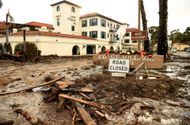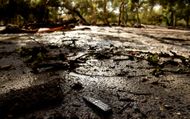Episode 5 of NBC’s new limited series Survival Mode dives into one of the deadliest moments in recent California history: the Montecito mudslides of January 2018. Survival Mode ep 5 premieres Monday, August 4, 2025, at 10 p.m. ET on NBC, and drops for streaming on Peacock the next day, Tuesday, August 5. Coming in the middle of a nine‑episode season that began on July 7, this installment shifts focus from the headline disasters to the real people caught in the mud’s path.
Survival Mode, overall, is produced by NBC News Studios and tells true stories of ordinary folks who found themselves facing life‑or‑death emergencies, from tornadoes to wildfires to wrecked highways. Each week in Survival Mode, new survivors, emergency responders, and family members give firsthand accounts of how they lived through chaos and loss, backed with rare footage and unreleased audio.
In Survival Mode Episode 5, viewers are taken back to Montecito’s pre‑dawn hours, when unprecedented rainfall loosened debris from fire-scorched hillsides and unleashed a wall of mud that buried homes and killed dozens.
The episode of Survival Mode promises interviews with residents, local officials, rescue teams, and experts who revisit how warning messages got mixed up, why so many stayed behind, and what choices really mattered when the mud began moving.
Survival Mode: 5 harrowing details about the deadly Montecito Mudslides from 2018

1) Entire homes were wiped out in minutes while residents were still sleeping
The mudslides hit Montecito just after 3:30 a.m. on January 9, 2018. Most people were still in bed when the hillside collapsed. Heavy rain loosened scorched soil from the Thomas Fire and created a violent rush of mud that crashed into homes without warning.
Families were jolted awake by what sounded like explosions. Some homes vanished completely within seconds. One house on East Valley Road was swept off its foundation and never recovered. People were found buried in mud up to their necks. The timing left almost no chance to react or escape.
2) Boulders the size of cars and homes rolled through neighborhoods
This wasn’t just flowing mud. It was a violent mix of water, rocks, and debris. Massive boulders, some weighing several tons, rolled downhill at frightening speeds and crushed everything in their way.
A 30-foot-wide boulder stopped near Olive Mill Road, flattening trees and structures. Cars were thrown and jammed into trees. Utility poles snapped like twigs. One Jeep was found standing vertically in a tree. The slide carried chunks of road, destroyed fences, and battered entire neighborhoods in under five minutes. Emergency teams said they had never seen debris flow move this fast.
3) Confusion around evacuation zones cost lives

Before the storm hit, county officials issued warnings using text, email, and social media. But a press release and a Facebook post included mismatched descriptions of the evacuation areas. That led to mass confusion among residents.
People living in voluntary zones didn’t always know how close they were to danger. Many didn’t realize they were right next to mandatory zones. Afterward, it was revealed that 17 of the 23 people who died were in voluntary zones. Had the messages been clearer or more urgent, some families might have chosen to evacuate in time.
4) Less than 20 percent of people in the mandatory evacuation zone left
Despite warnings, very few residents in Montecito’s mandatory evacuation areas actually left. Authorities sent out over 200,000 alerts across multiple platforms, but only one in five people complied.
Some thought the worst had already passed after surviving the fire. Others didn’t believe the storm would be severe. Many were tired from recent evacuations and reluctant to leave again. But that decision became deadly. Several who stayed behind died in homes that had been clearly marked in red on county maps the day before. The risk was underestimated by many who paid the ultimate price.
5) Bodies were found miles from where homes once stood

The speed and force of the slide carried victims far from their homes. Rescue crews later discovered that the mud had pushed people more than a mile away. Some bodies were recovered near the beach, nowhere near the original impact zones.
Ten-year-old Jonathan Benitez was swept nearly two miles before being found. A family of three was scattered across separate locations. The mud changed the shape of the land, blocked roads, and destroyed landmarks. Two victims' bodies were never recovered at all. Search teams worked day and night, but even then, not everyone could be found.
Follow for more updates on Survival Mode.
